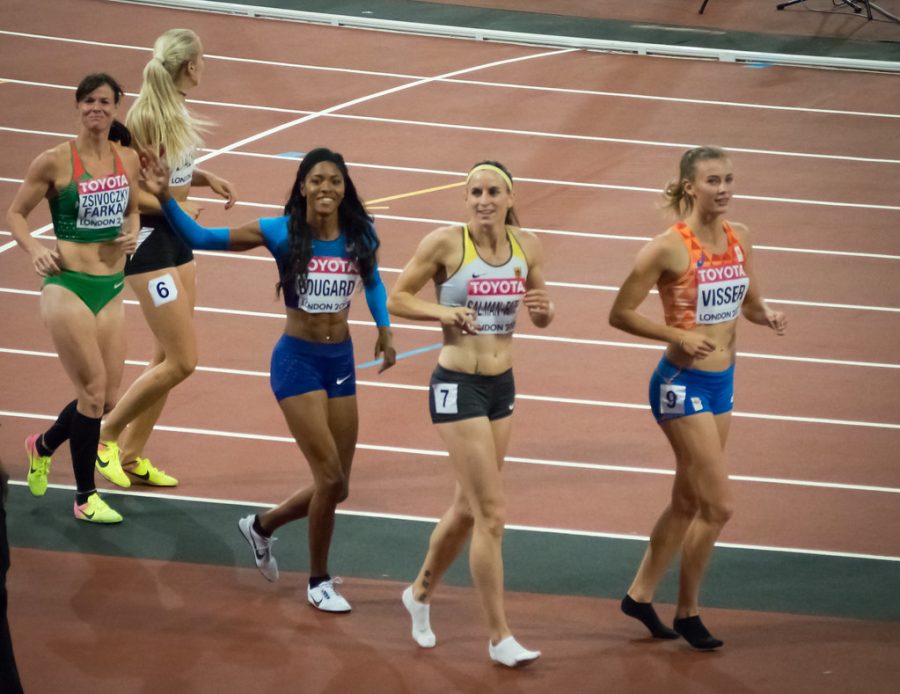Athletes face body image issues
Creative commons photo “Race celebration – London Athletics” courtesy of mreillyphoto
Division I NCAA athletes found that over one-third of female athletes reported symptoms placing them at risk for anorexia nervosa. https://creativecommons.org/licenses/by/2.0/
May 10, 2019
The pressure to succeed athletically manifests differently depending on the sport: the fastest times, the longest jumps or the highest scores. Sometimes, this compulsion extends outside of the sport and into the way athletes view their bodies.
Eating disorders and unhealthy body comparisons remain common among athletes, as society sees these people as the pinnacle of physical fitness and health. Emphasis on body weight and shape coupled with the desire to win can create a toxic combination.
According to the National Eating Disorders Association, a study of Division I NCAA athletes found that over one-third of female athletes reported symptoms placing them at risk for anorexia nervosa. Women face the majority of body image issues in athletics, but in sports that stress an athlete’s size like wrestling and bodybuilding, male athletes are also at an increased risk.
Another study looked at female NCAA Division I athletes in basketball, softball, track and cross country, volleyball, soccer, swimming and diving, tennis and ice hockey. This study concluded that 49.2 percent of Division I athletes met the criteria for an eating disorder.
Body image and weight pressure can stem from coaches, but recent research shows that they more often come from fellow teammates, according to the Eating Disorder Hope. Individually-focused sports such as gymnastics, running or figure skating tend to scrutinize appearance and diet for that one athlete.
Many athletes struggle with body dissatisfaction due to the misconception that athletes must have a specific build to attain success. Andrea Walkonen, a former three-time All American in Cross Country and 2016 U.S. Olympic Trials qualifier developed a crippling eating disorder as a result of her extreme training.
According to Eating Disorder Hope, the only chance for a solution is for coaches and other athletic professionals to obtain further education on effective skills to not promote unhealthy body image, dieting behaviors and weight.
Athletes carry a higher potential for body image issues and eating disorders because their bodies are their instruments that are constantly on full display. No athlete is immune from these behaviors and a possible solution is to educate those pushing the unhealthy ideals onto developing minds.






